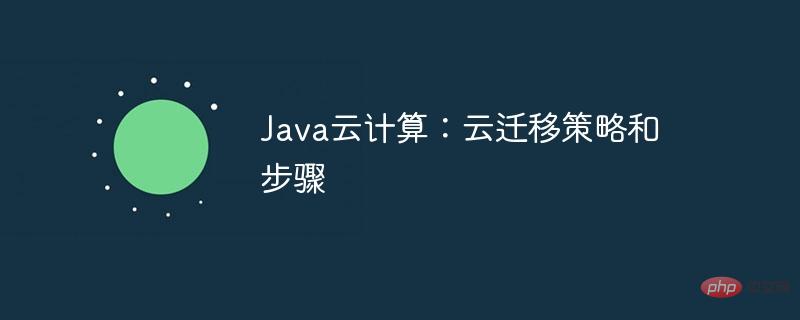Home >Java >javaTutorial >Java Cloud Computing: Cloud Migration Strategies and Steps
Java Cloud Computing: Cloud Migration Strategies and Steps
- PHPzOriginal
- 2024-06-05 15:54:491086browse
Java cloud migration involves migrating applications and data to cloud platforms to gain benefits such as scaling, elasticity and cost optimization. Best practices include: Thoroughly assess migration eligibility and potential challenges. Migrate in stages to reduce risk. Adopt cloud-first principles and build cloud-native applications wherever possible. Use containerization to simplify migration and improve portability. Simplify the migration process with automation. Cloud migration steps cover planning and assessment, preparing the target environment, migrating applications, migrating data, testing and validation, and optimization and monitoring. By following these practices, Java developers can successfully migrate to the cloud and reap the benefits of cloud computing, mitigating risks and ensuring successful migrations through automated and staged migrations.

Java Cloud Computing: Cloud Migration Strategies and Steps
Introduction
Cloud Migration is the process of moving legacy applications and data to a cloud platform. For Java developers, cloud computing offers benefits such as scale, elasticity, and cost optimization. This article describes best practices, strategies, and step-by-step guidance for Java cloud migration.
Cloud Migration Strategy
- Comprehensive Assessment: Determine application and data eligibility for cloud migration and identify potential challenges.
- Phased Approach: Phased migration, gradually moving applications and data to the cloud to minimize risks.
- Cloud-First Principle: Build new applications as cloud native whenever possible and take a cloud-first approach.
- Containerization: Enable easier migration and greater portability by using containers to package and deploy applications.
- Automation: Simplify the migration process and reduce manual operations with automated tools.
Cloud migration steps
- Planning and assessment: Determine the scope of migration, develop a migration plan and assess technical feasibility.
- Prepare the target environment: Configure appropriate infrastructure and services on the cloud platform, such as compute instances, storage, and networking.
- Migrate applications: Use techniques such as code refactoring, re-platforming, or redeployment to migrate applications to the cloud.
- Migrate data: Migrate data from a local database or file system to a cloud database or object storage.
- Testing and Validation: Comprehensive testing of applications and data after migration to ensure functionality and data integrity.
- Optimization and Monitoring: Optimize cloud resources to improve performance and reduce costs, and continuously monitor the migrated environment to ensure continued stability.
Practical Case
An online retailer adopted the Phased Approach strategy to migrate its Java e-commerce application to the Azure cloud platform. They migrated smaller application components and non-critical data first, then gradually migrated more complex applications and core data. With this approach, they were able to migrate with minimal business disruption and maximum stability.
Conclusion
By following a clear cloud migration strategy and step-by-step guide, Java developers can successfully migrate applications and data to the cloud platform, thereby achieving cloud computing benefits. Thorough assessment, step-by-step migration, and automation will help reduce risk and ensure a successful migration.
The above is the detailed content of Java Cloud Computing: Cloud Migration Strategies and Steps. For more information, please follow other related articles on the PHP Chinese website!

